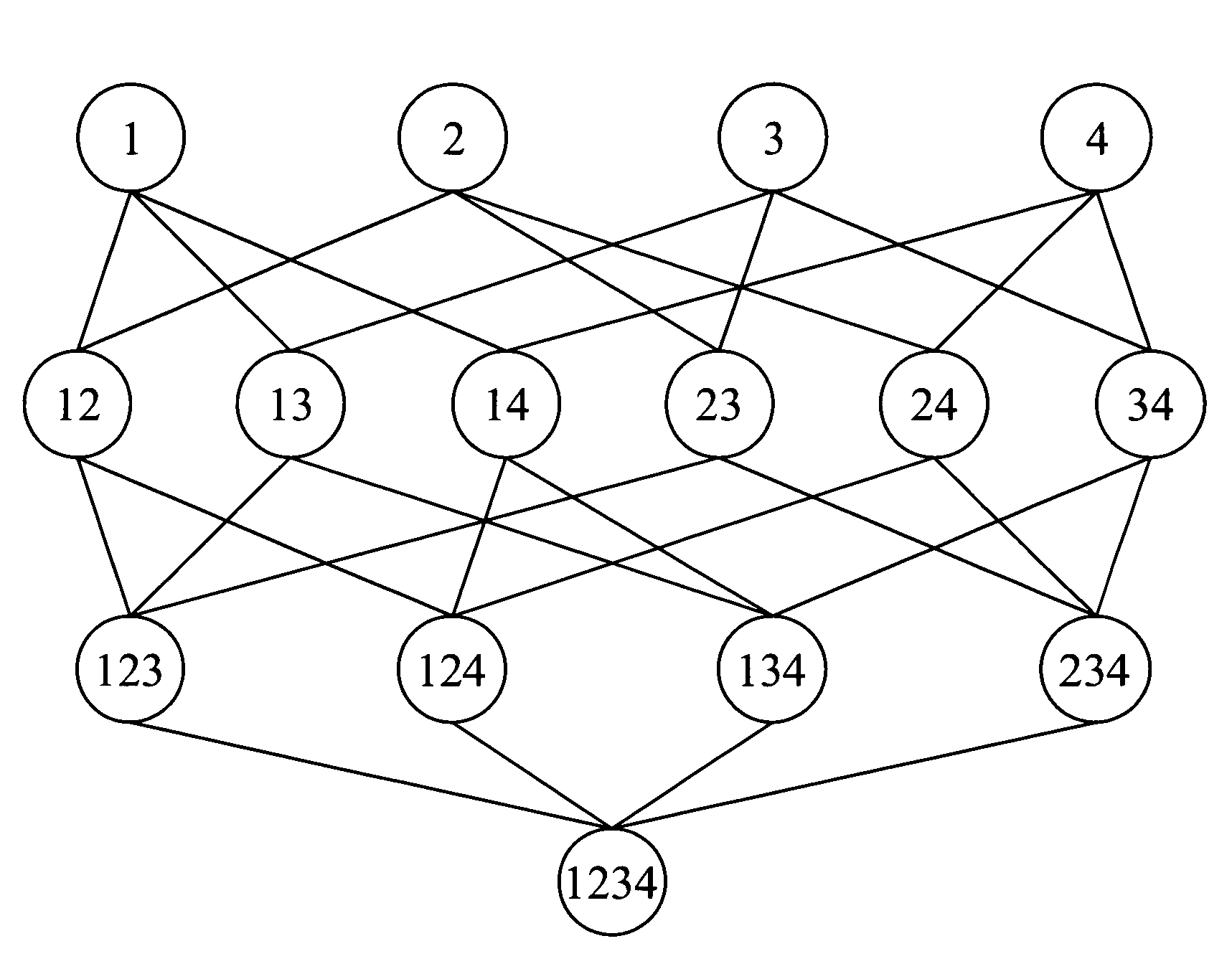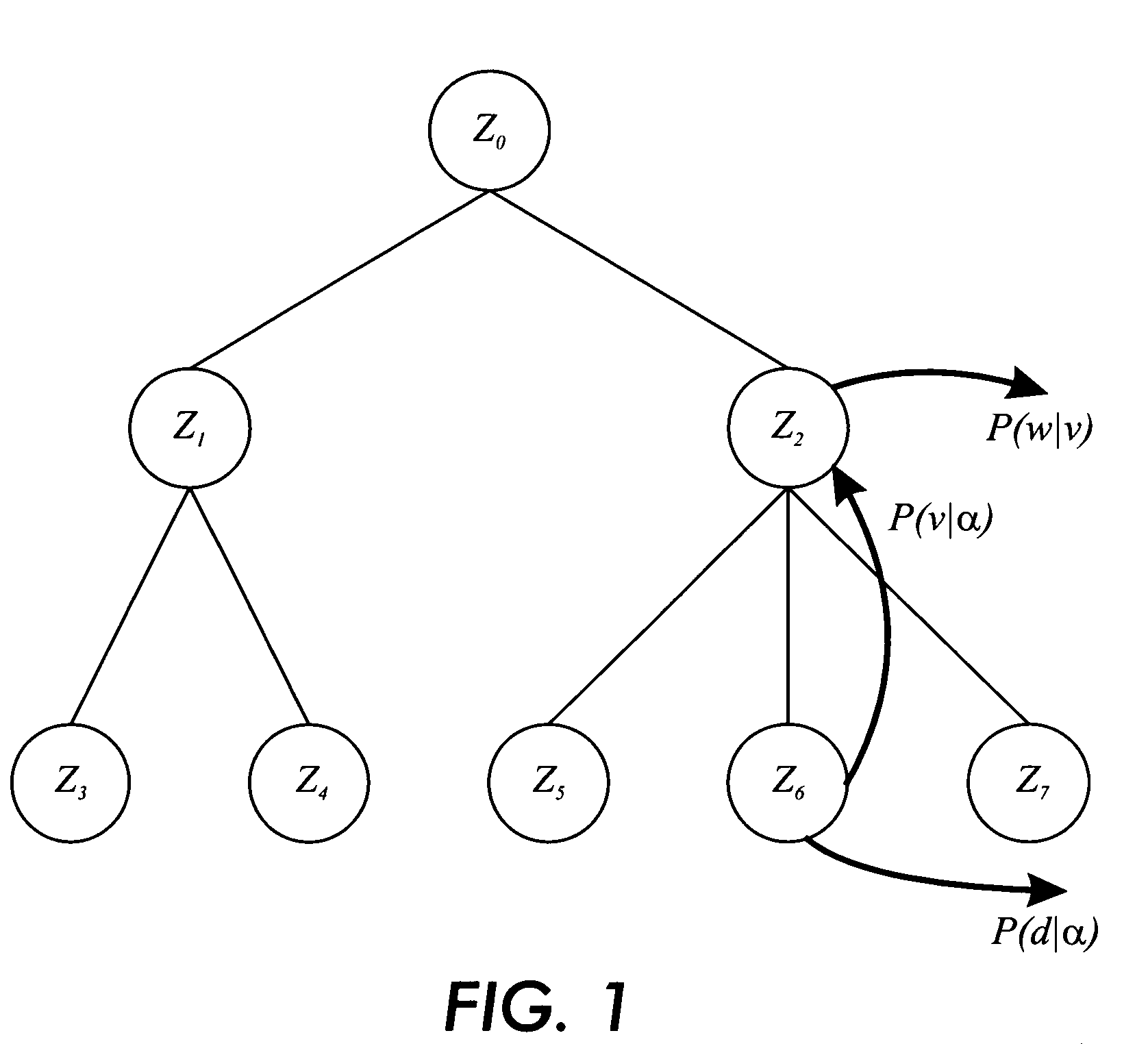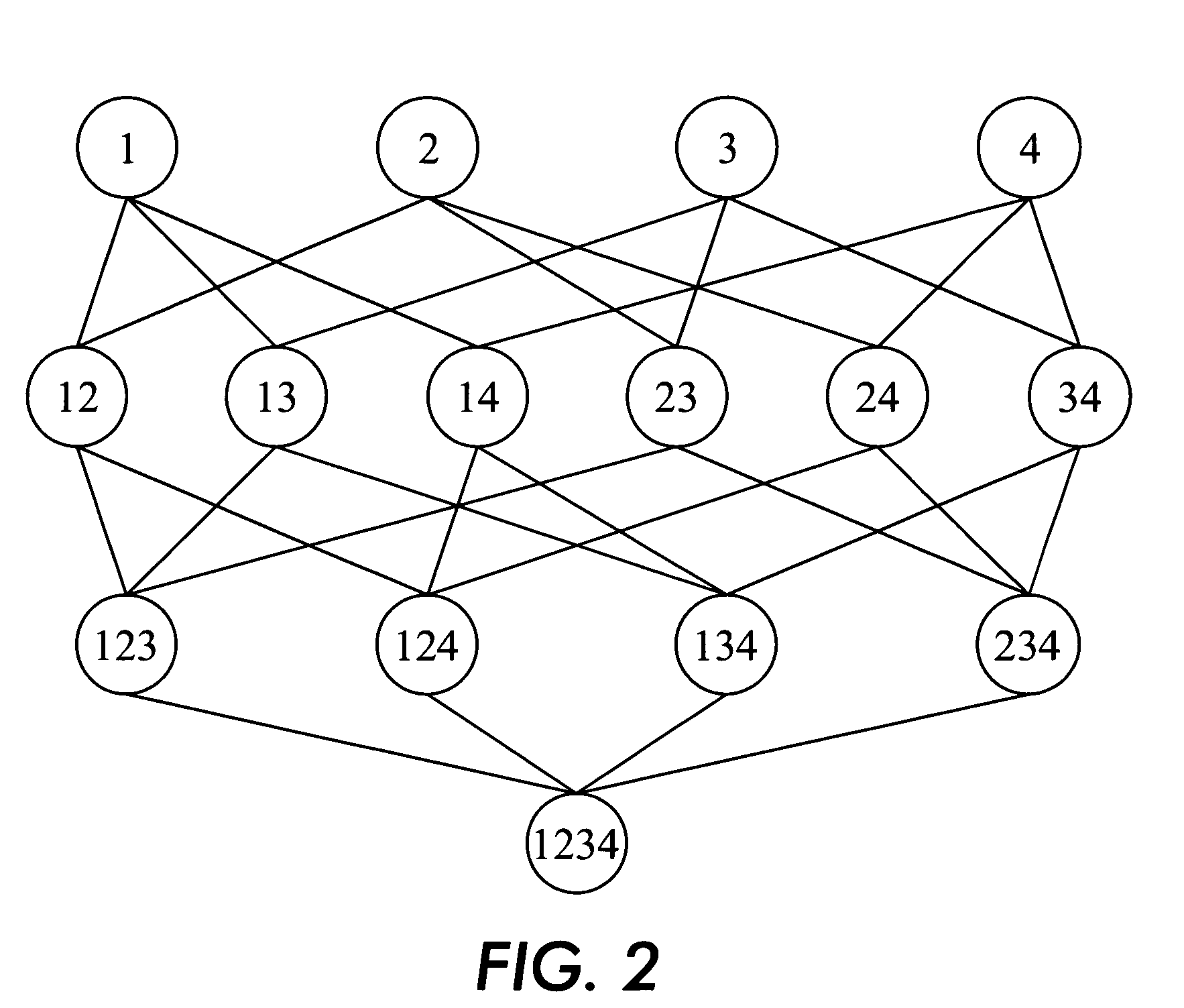Method for multi-class, multi-label categorization using probabilistic hierarchical modeling
a probabilistic hierarchical modeling and categorization technology, applied in the field of methods for categorizing and classification of objects, can solve problems such as insensitive methods
- Summary
- Abstract
- Description
- Claims
- Application Information
AI Technical Summary
Benefits of technology
Problems solved by technology
Method used
Image
Examples
Embodiment Construction
[0017]Let us first introduce the notation and the model that will be used in the following. While the method of the invention applies to many different objects, for convenience, the method will be described with respect to a particular object type—documents. A document d from document space D shall be assigned a number of categories l1 . . . lP, li∈{1 . . . L}, where 1 . . . L represent L possible object / document categories. The assigned categories l1 . . . lP represent the set of categories for which the object / document is relevant. We first define new labels, z, which are essentially all possible combinations of any number of the L categories:
z∈{{1},{2}, . . . {L}, {1,2}, . . . {1,L}, {2,3}, . . . {1,2,3}, . . . {1,2, . . . L}}
For example, if L=3, the new labels z are {1},{2},{3},{1,2},{1,3}, {2,3}, {1,2,3}. For example, documents that are in both categories 1 and 3 are assigned labels l1=1 and l2=3 in the original set, and z={1,3} in the newly defined labels. Those documents are ...
PUM
 Login to View More
Login to View More Abstract
Description
Claims
Application Information
 Login to View More
Login to View More - R&D
- Intellectual Property
- Life Sciences
- Materials
- Tech Scout
- Unparalleled Data Quality
- Higher Quality Content
- 60% Fewer Hallucinations
Browse by: Latest US Patents, China's latest patents, Technical Efficacy Thesaurus, Application Domain, Technology Topic, Popular Technical Reports.
© 2025 PatSnap. All rights reserved.Legal|Privacy policy|Modern Slavery Act Transparency Statement|Sitemap|About US| Contact US: help@patsnap.com



